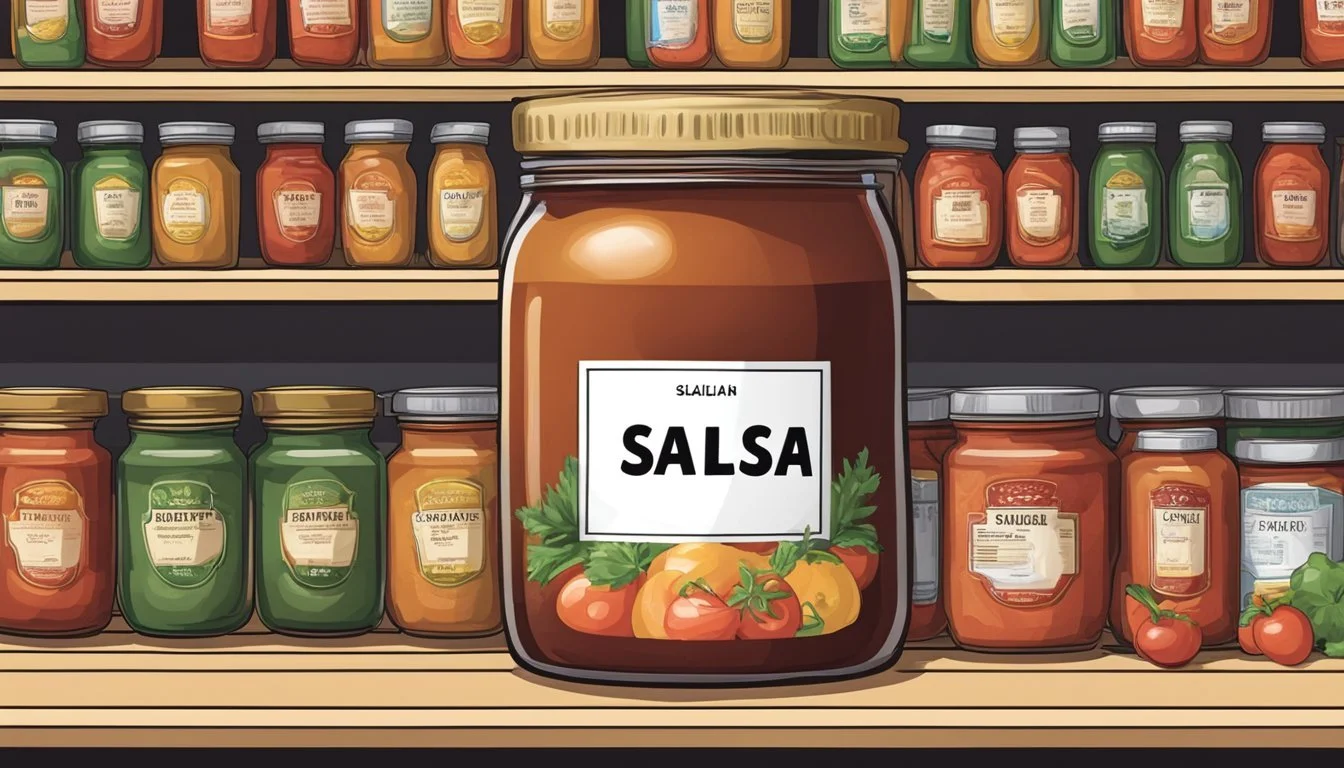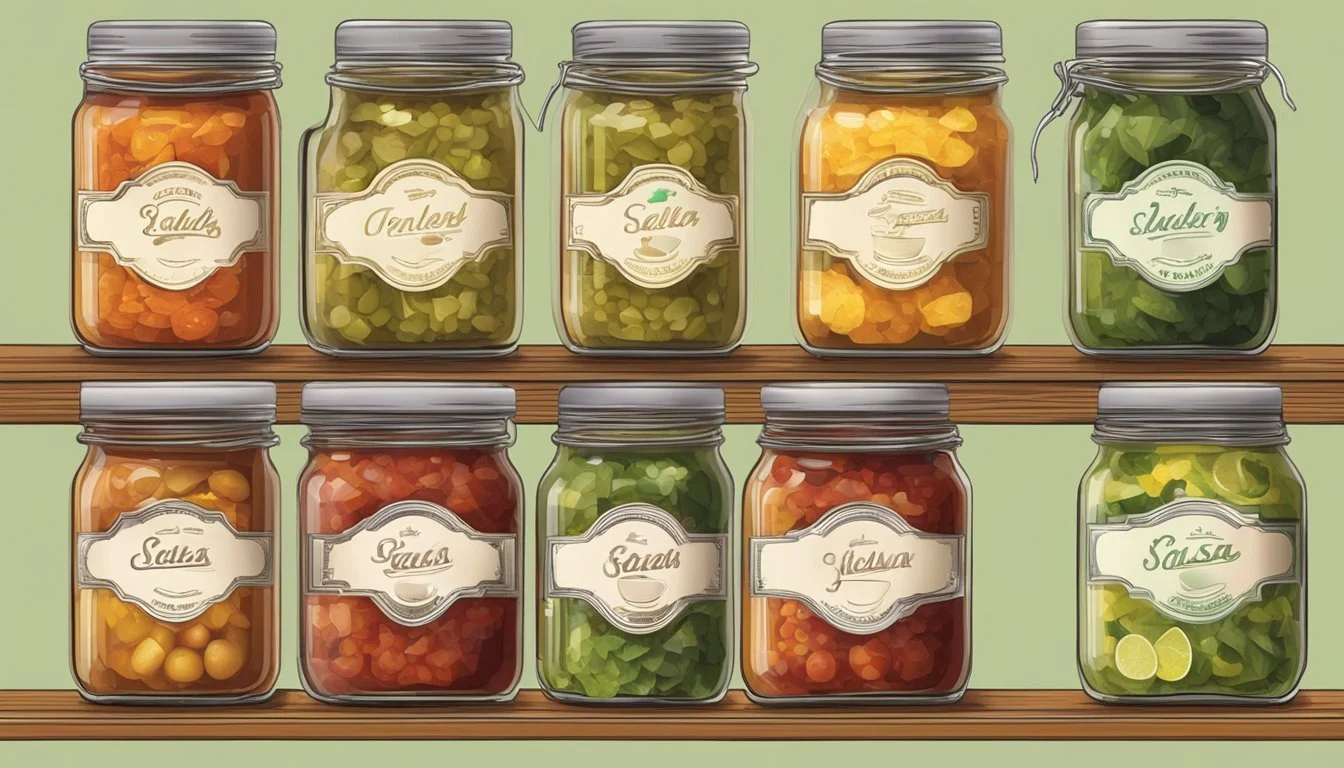How Long Does Salsa Last?
Shelf Life and Storage Tips
When it comes to preserving the flavor and safety of salsa, understanding its shelf life is crucial. Store-bought salsa, once opened, generally remains fresh for 2 to 4 weeks if kept refrigerated. It is essential to monitor any signs of spoilage, as these indicate that the salsa should no longer be consumed. Fresh homemade salsa has a shorter refrigerator lifespan, typically between 4 to 6 days due to the absence of preservatives that are often present in commercially processed variants.
To potentially extend the shelf life of salsa, one might consider freezing it. Transferring the salsa into a plastic freezer bag, ensuring air is pressed out before sealing, can maintain its quality. Frozen salsa can last for up to six months, although it is ideal to label the bag with the freezing date to keep track of its longevity.
Proper storage techniques play a vital role in preserving salsa's edibility. Both store-bought and homemade salsa should be stored in airtight containers and kept at a consistent refrigeration temperature. Guidelines regarding the shelf life of salsa serve not only to maintain its taste but also to ensure that it is safe for consumption.
Overview of Salsa
Salsa is a versatile and popular condiment in Mexican cuisine that has gained international acclaim for its vibrant flavors. Typically, salsa consists of tomatoes, onions, and cilantro as its core ingredients. To add zest and tanginess, lime juice is often included. Chilies, such as jalapeno, introduce heat, which can be adjusted to taste.
The ingredient list for salsa might also include vinegar or hot sauce to add complexity and preservation qualities. A gamut of herbs and spices can be incorporated to diversify the flavor profile. Common additions include paprika for a smoky note and additional herbs like oregano that complement the salsa's overall taste.
Ingredients Purpose Tomatoes Foundation; provides body and acidity Onions Sharpness and depth Cilantro Freshness; distinctive herbal note Lime Juice Brightness and tang; acidulates the salsa Chilies Heat and intensity Vinegar/Hot Sauce Preservation and added complexity Herbs/Spices Enhance flavor and aroma
The basic components of salsa can vary greatly to include a wide spectrum of chilies, from mild to intensely hot, and the use of either fresh or canned tomatoes. This condiment can be prepared with either raw or cooked ingredients, and it appears in various forms from chunky to smoothly blended. Salsa is served as a dip, a sauce, or an accompaniment to many dishes, reflecting its integral role in Mexican culinary tradition.
Types of Salsa
Different types of salsa offer varying shelf lives, largely influenced by the ingredients used, the preparation method, and the storage conditions. Below is an exploration of the common types of salsa and how they differ.
Homemade Salsa
Homemade salsa typically consists of fresh ingredients without preservatives. Because of its lack of preserving agents, fresh homemade salsa usually lasts between four to six days when kept refrigerated. The recipe for homemade salsa can vary, influencing both flavor and longevity.
Store-Bought Salsa
Store-bought salsa comes primarily in two forms: refrigerated and shelf-stable jarred versions. Shelf-stable salsas contain preservatives and are pasteurized, making them last longer. They usually have a use-by or best-by date provided by the manufacturer, indicating when they're expected to be at peak quality.
Refrigerated Salsa
Salsa found in the refrigerated section has a shorter shelf life compared to canned salsa. An opened jar of refrigerated salsa is expected to last for two weeks to a month in the fridge. The cold environment slows down bacterial growth, but frequent opening can shorten its longevity.
Frozen Salsa
Freezing is an effective method to extend salsa's shelf life. Frozen salsa can be kept for about 6 months. However, it's essential to ensure the salsa is stored in airtight containers to prevent freezer burn. Defrosting must be handled with care to maintain the salsa's quality.
Canned Salsa
Canned salsa, also known as jarred salsa, typically undergoes pasteurization, which allows it to be stored for extended periods. An unopened jar can last for several months. The expiration date on the can helps indicate how long it can be safely consumed, though it's best consumed before this date for optimal taste.
Shelf Life and Preservation
Understanding the shelf life and proper preservation methods of salsa is essential to maintain its freshness and safety for consumption. One must adhere to specific storage techniques depending on whether the salsa is homemade or store-bought.
Shelf Life of Salsa
The shelf life of salsa varies greatly depending on its origin and how it's processed. Store-bought salsa typically has a longer shelf life due to preservatives and can last unopened in the pantry for up to two years. Once opened, it's safe in the refrigerator for 2-4 weeks. In contrast, homemade salsa without preservatives should be consumed within 4-7 days when kept refrigerated.
Preserving Agents
Preserving agents such as vinegar and lime juice not only add flavor but also extend the shelf life due to their acidic nature that hinders bacterial growth. These ingredients are common in store-bought salsas and contribute to their extended pantry shelf life in comparison to homemade versions.
Airtight Storage
Storing salsa in an airtight container is crucial. Sealing the salsa limits oxygen exposure, which can catalyze the degradation of flavors and increase the risk of bacterial contamination. Whether it's a glass jar or a plastic container, ensure the seal is secure after each use.
Refrigeration Techniques
After opening, salsa should be stored in the fridge to slow down bacterial growth and preserve its quality. Store-bought salsa kept refrigerated maintains its safety and flavor profile for 2-4 weeks. Always use a clean spoon to scoop out salsa to avoid introducing contaminants.
Freezing Methods
For long-term storage, freezing salsa is an effective method. Freeze it in small portions—ideal for single use—in a plastic container or freezer bag, carefully removing as much air as possible before sealing. Properly frozen salsa can last up to six months while maintaining quality, though texture changes may occur.
Identifying Spoilage
When checking salsa for spoilage, specific indicators help determine whether it's safe to consume. These include changes in color, the presence of mold, a sour smell, alterations in texture, and an off taste.
Visual Signs
Color: Fresh salsa typically has a vibrant, rich hue. If the color turns dull or there is a noticeable change, it may signal spoilage. Mold: Visible mold growth, which could be green, black, or white, is a clear sign that the salsa should be discarded.
Olfactory Signs
Smell: Salsa that has a sour or off smell is likely spoiled. This can be quite distinct from the fresh, zesty aroma of unspoiled salsa. Any unpleasant odor is a sound reason to avoid consumption.
Texture and Consistency
Texture: An opened jar of salsa should have a similar consistency to when it was first opened or made. If it becomes excessively watery or thickened beyond normal, it may not be safe to eat.
Taste Assessment
Taste: Although it's not advisable to taste salsa if it shows other signs of spoilage, a tangy or sour taste, different from its original flavor, typically indicates spoilage. Always prioritize food safety and discard the salsa if in doubt.
Safety and Health Considerations
When it comes to salsa, a beloved condiment, ensuring safety and health is paramount. Understanding proper food safety practices, recognizing the risks of consuming spoiled salsa, and knowing when to discard it are all crucial to prevent foodborne illnesses.
Food Safety Practices
To maintain salsa's freshness and safety, individuals must adhere to strict food safety practices. For store-bought salsa, consumers should follow the expiration date on the packaging. Homemade salsa typically has a shelf life of four to seven days when refrigerated. To prevent the introduction of bacteria, it's important to avoid double-dipping and to use clean utensils each time the salsa is served.
Risks of Spoiled Salsa
Consuming spoiled salsa can present several health risks, including foodborne illnesses. Signs of spoilage include an off odor, mold growth, color changes, and an unpleasant taste. Bacteria such as Salmonella and E. coli could thrive in improperly stored salsa, leading to symptoms like vomiting, diarrhea, and fever.
Best Practices for Discarding Salsa
When in doubt, the safest route is to discard the salsa. If there's any indication that the salsa has passed its shelf life, has been stored improperly, or shows signs of spoilage, it should be thrown away. This helps to ensure the safety of anyone who might consume the salsa. To discard salsa, it should be sealed properly to avoid spillage and then placed in the trash.
Culinary Uses
Salsa, a versatile and vibrant condiment, plays a crucial role in enhancing the flavors of various dishes. Its composition, which often includes quality ingredients such as chili peppers and tomatoes, can significantly influence the outcome of a meal.
Traditional Dishes
In the landscape of Mexican cuisine, salsa acts as a cornerstone, commonly served with tacos and nachos. Each recipe varies, but the inclusion of hot peppers adds a quintessential kick that is both traditional and beloved. Food scientists acknowledge that salsa's quality is paramount, as it underpins the dish's authenticity and taste.
Tacos: Salsa provides not only a burst of flavor but also a complementary texture to the meat within tacos.
Nachos: A dollop of salsa atop a mound of nachos introduces a fresh, acidic contrast to the richness of cheese.
Creative Pairings
Chefs often recommend salsa as a secret ingredient in non-traditional dishes due to its robust flavor profile. It can be creatively paired with various types of meat, offering an unanticipated twist to classic recipes.
Meat: Incorporating salsa into meat-based dishes, such as beef stews, can add both moisture and a complex flavor profile.
Vegetarian dishes (What wine goes well with vegetarian dishes?): Salsa can be used as a primary ingredient in vegetarian cooking, adding depth and heartiness to meat-free options.
Professional Tips
From a professional standpoint, the key to maximizing salsa's culinary potential lies in its application and the cook's understanding of flavor complexity. Here are a couple of insights from those in the field of cooking:
When preparing salsa, one should consider the balance of ingredients to ensure that no single element overwhelms the others.
To preserve the quality and flavor of salsa, proper storage is crucial, as recommended by food safety standards.






